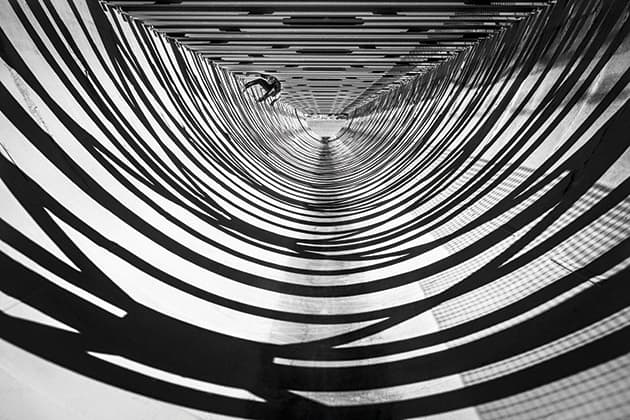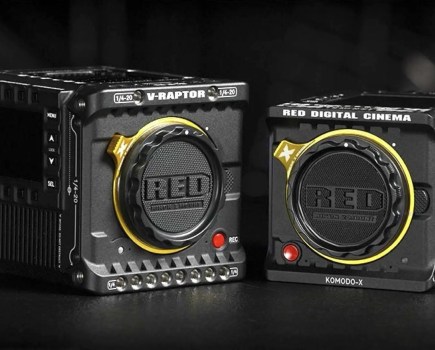Walk through any major city and the first thing that strikes you is the architecture. Buildings old and new, modern and postmodern stand side by side; some seemingly there for their aesthetic value alone, others purely functional. It can be dizzying trying to identify a theme in the overall plan, particularly when each building or landmark seems to have been created with only itself in mind.
However, perhaps you’re just not seeing things from the right perspective. A small community of guerrilla athletes make it their business to occupy and use the pavements and concrete walkways of these chaotically designed cities. Every elevated plane, every set of steps, every length of concrete is a new challenge.
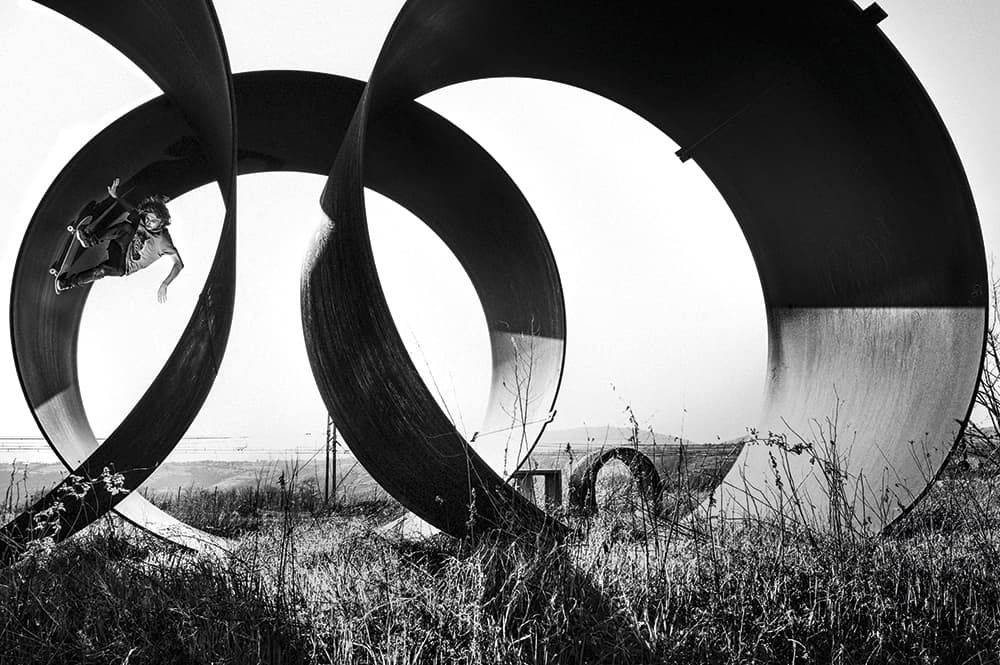
Near Lyon, France, 2013. Leica M, 28mm, 1/180sec at f/2, ISO 320
Skateboarders are a familiar sight and, depending on the location, a welcome addition to what can often be drab concrete surroundings. Sitting outside the Barcelona Museum of Contemporary Art, for example, is an experience enhanced by their presence. You can lose hours hypnotised by their skills. It’s an activity that lends itself perfectly to photography, one of the best exponents being Fred Mortagne.
One of the most striking things in any photographic body of work is when an artist succeeds in blending multiple genres to create something completely their own, something that defies easy categorisation. In the work of Lyon-based skateboarder, videographer and photographer Mortagne we find a seamless blend of action, sports, portraiture, architecture and fine art. His images are, to put it mildly, stunning. Mortagne’s ability to capture the action, light and form in striking black & white images has seen his name and images pop up all over the world.
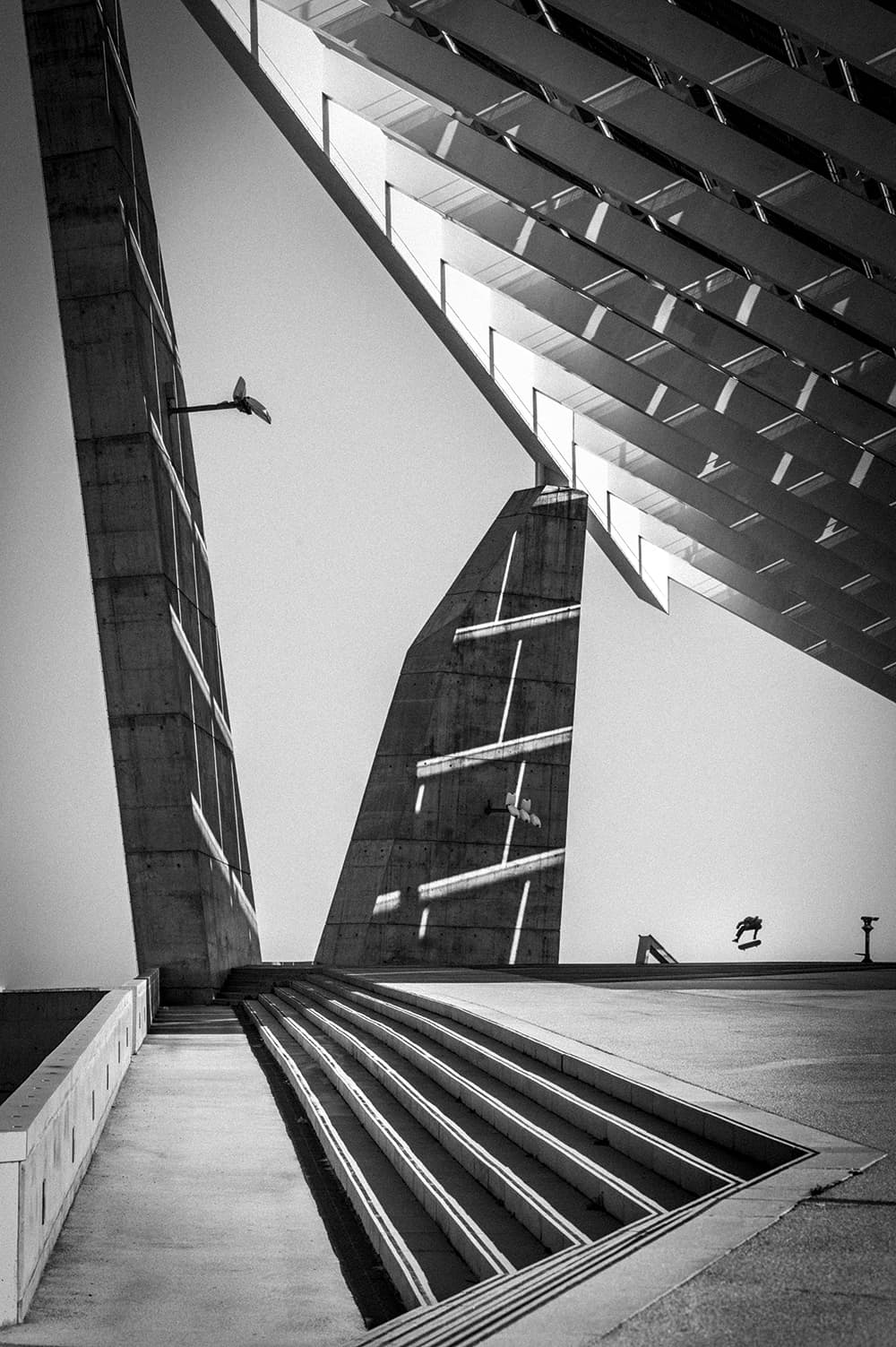
Barcelona, Spain, 2013. Leica M, 90mm, 1/1500sec at f/4.8, ISO 400
‘There are so many talented skateboarding photographers out there, and my process was to try and create something new; to present different ideas than the things people would normally shoot,’ says Mortagne.
‘At the time I started, it was all about colour images shot mostly with flash and fisheye lenses, so I just wanted to bring something else to the table; another facet of skateboarding that was not represented. I wanted to be more sensitive about the style and aesthetics of the sport. It was a very personal project, whereas my videography was totally the opposite. That was all done with marketing purposes and expectations.’
As he says, Mortagne’s work also finds him working as a videographer, although when asked about them as if they were separate entities he’s clear they are complementary. This is a good thing, considering cameras are now hybrids of photography and video recording equipment.
‘Photography came many years after my work in video, although I still do that as well,’ he says. ‘I started having ideas of images that I thought could only work as stills, so I grabbed a Nikon FM2 and tried my hand at capturing these things on 35mm film.’
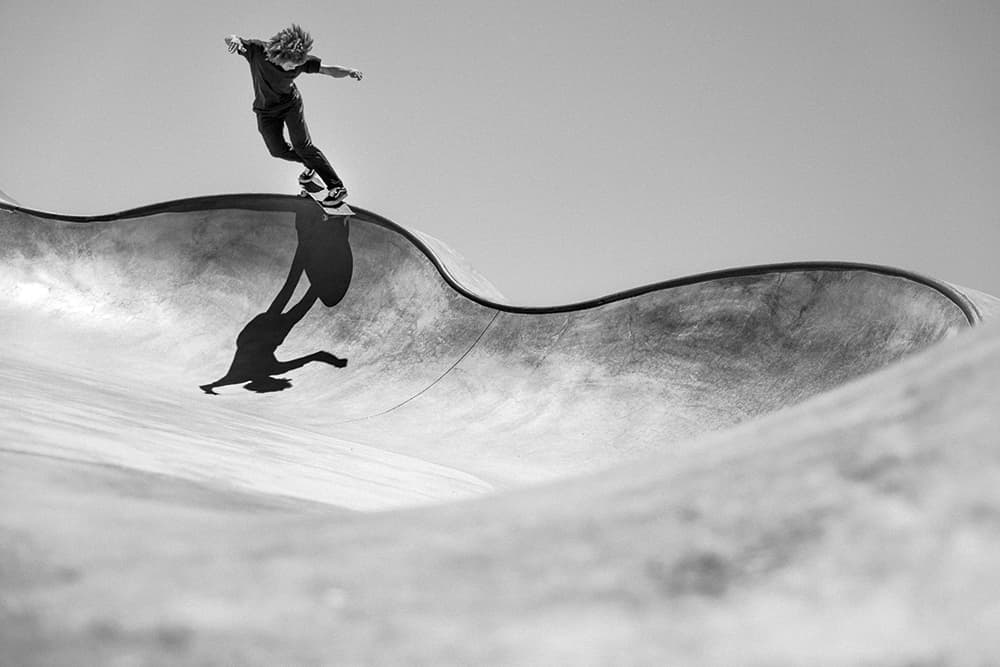
Venice Beach, California, 2015. Leica SL, 24-90mm, 1/2000sec at f/4, ISO 100
Style and kit
Finding himself in a world of photographers who followed the trend of vividly coloured, fisheye action shots, Mortagne decided early on to try something new. His images were the polar opposite to the homogenous style found in much action photography.
‘It was against the norm to work in this way,’ says Mortagne. ‘Also, working with black & white really helped to inject an artistic touch into the work. I always wanted to go beyond reality; to maybe create something a little poetic. I like the timeless dimension black & white brings to images. All of that, combined with the other ingredients I sought out, meant that eventually I was able to develop an overall, recognisable style.’
This penchant for black & white suits the cameras – the Leica M Monochrom and Leica SL.
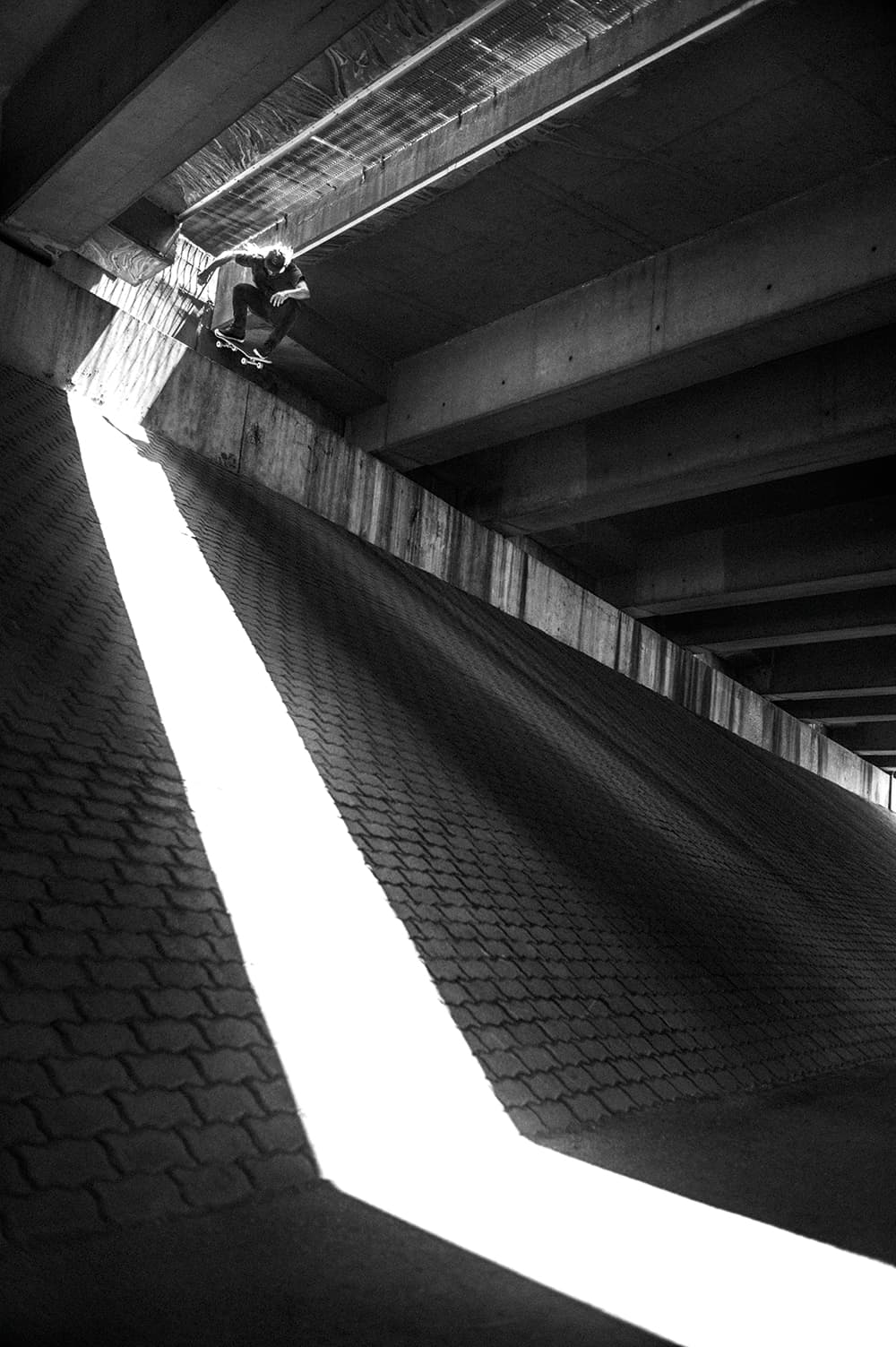
Lyon, 2014. Leica M, 1/500sec at f/2, ISO 1250
‘I love the Leica M Monochrom,’ he says. ‘The quality is incredible. The black & white comes out beautifully. I was really impressed when I started to use it because, to be honest, I wasn’t much of a digital enthusiast. The SL is very cool as well because it is much more technical, has a lot of important and helpful features, and on top of that can I shoot 4K video with it. At the same time, it’s fairly compact, so it’s great to be able to travel with a small bag with a tool to cover all my needs.
‘On the lens front, I love the M lenses and have used them on the SL. My favourites right now are the Leica Summicron-M 35mm f/2 ASPH and Leica APO-Summicron -M 90mm f/2 ASPH. For a long time I used the Leica Summicron-M 28mm f/2 ASPH, which I let sit in a box for a while, but now I’m using it a lot again. I really appreciate the visual dynamics it can create.’
Due to the fast-paced and kinetic nature of Mortagne’s work, he’s not the kind of photographer to weigh himself down with multiple accessories. As long as he has his camera, lenses, batteries and memory cards he’s set to go. In this respect he uses his instincts as a skateboarder to adapt to the situation he is presented with. If he needs the camera to remain still, he’ll use a rubbish bin to stabilise it. If he places the camera on the ground and needs it level, he’ll just wedge his wallet underneath.
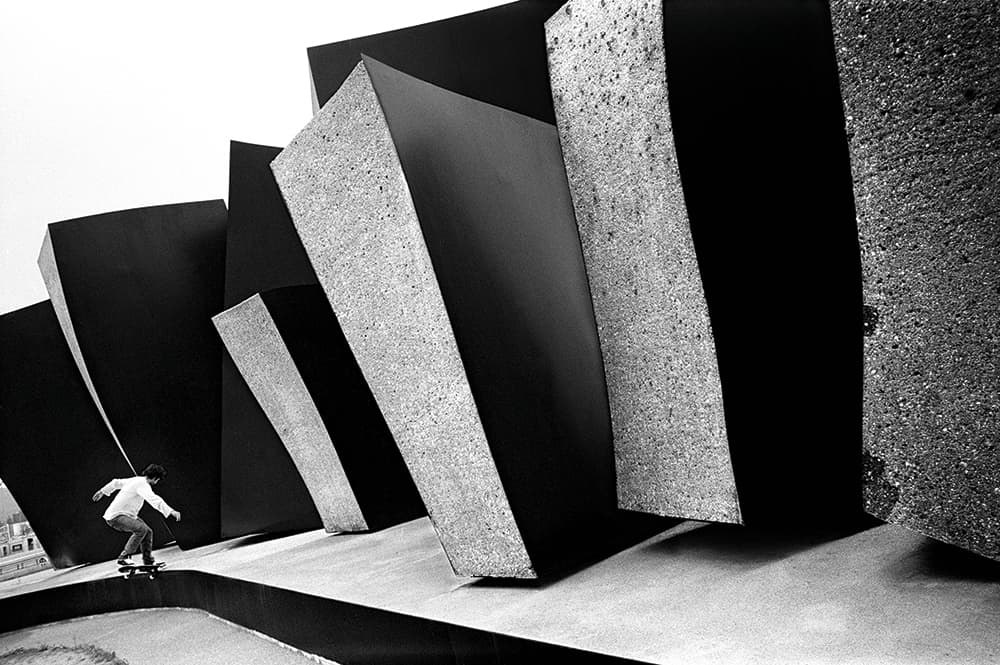
Lyon, France, 2007. Nikon FM2, no record of exposure
Light and location
The first thing to note about Mortagne’s approach to photography is his attraction to stripped-down, minimalist locations and his formalistic approach to photographing them. Each image is a great lesson in how visual economy can be used to elevate images from mere pretty pictures to demonstrations of how the simplest means can be used to tell stories, create excitement and ultimately generate a body of outstandingly aesthetic work. The locations, found as far afield as Los Angeles, are absolutely crucial here. They’re not playing second fiddle to the skateboarders. They are as important as the action that’s unfolding upon them. Pavements, viaducts and stairways are all used for Mortagne and his subjects to create dramatic, athletic narratives.
‘What I look for on location is geometry and minimalism,’ he says. ‘I avoid any type of visual pollution. I’m constantly on the lookout and, thankfully, skateboarding allows me to travel a lot and go to some incredible places. That was actually one of my main motivations to start shooting pictures.’
Mortagne’s rejection of the standard practice of using flash to capture action shots is interesting because it means he will only work with what light is available.
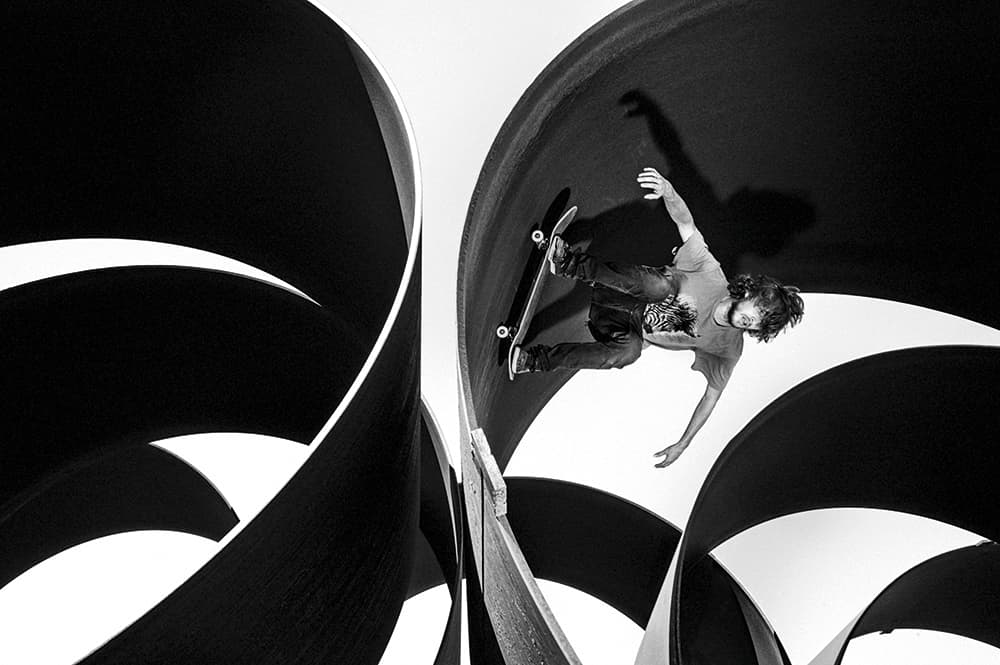
Near Lyon, France, 2013. Leica M, 28mm, 1/80sec at f/2, ISO 320
‘I started photography as a hobby, so there wasn’t room in my video camera bag to put anything else other than a small photo camera,’ he says. ‘Plus, I would never have the time to set up flashes for the kinds of shot I do, as I only have a few minutes to work out what I need.
‘And as I said before, real skate photographers were mastering the art of flash photography, for which I had no skills at all. It was just easier for me to do the total opposite. Anyway, I have to say artificial light is hard for me to comprehend and work with. It’s not something that feels natural for me. Despite the hands-on, manual nature of flash, I just don’t feel in control of it.’
That might sound odd, but look through Mortagne’s work and you can perhaps see where he’s coming from. Available light presents a clear set of parameters that, fleeting cloud cover aside, produces a ‘what you see is what you get’ scenario. This gives Mortagne a quick and clear idea of where the light will fall, and where the shadows are cast. With the lights as they are, the stage is set and his subjects can get on with doing what they do.
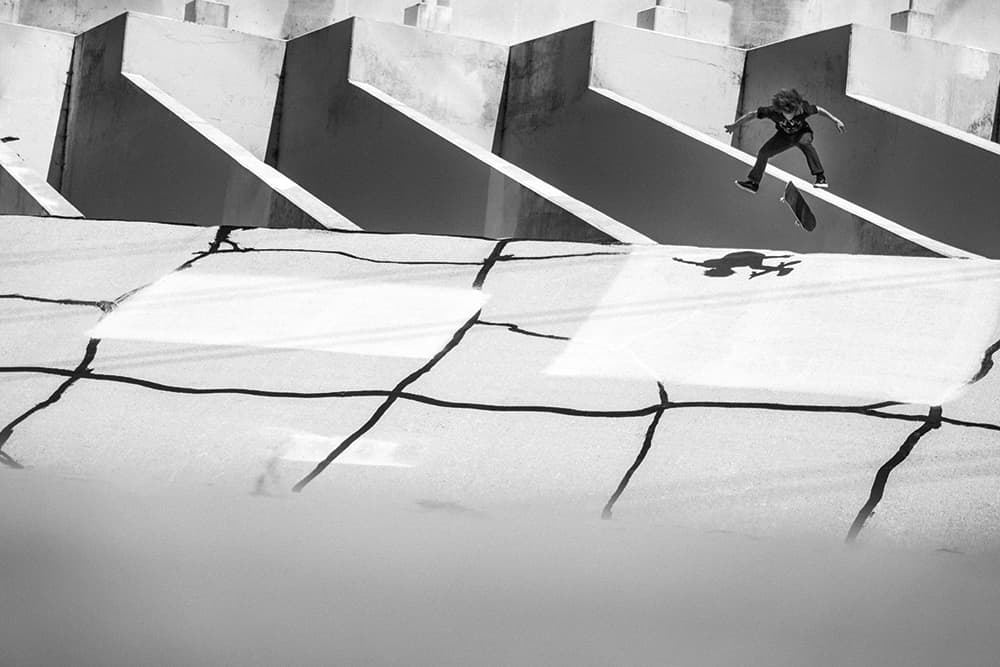
Long Beach, California, 2015. Leica SL, 24-90mm, 1/5000sec at f/4, ISO 200
Background
Mortagne started skateboarding around 35 years ago. He was, he admits, no good at school and he was starting to lose confidence in his life. He was something of a lost soul, but his discovery of skateboarding gave him the opportunity to reach his full potential. To be able to then find his own unique angle in the field by applying his skills as a photographer is surely an inspiring thing for anyone to hear.
Most significantly, he’s just completed a new book called Attraper Au Vol (Caught on the Fly), featuring a selection of his photography from the past 15 years.

Macon, France, 2013. Leica M, 90mm, 1/1000sec at f/10, ISO 1000
‘The book is about skateboarding but it’s accessible to non-skaters, as my work has always been about opening up skateboarding to wider audiences,’ says Mortagne. ‘Skateboarding has brought so much to my life. It’s given me freedom, travel, fun and friends.
‘I’ve met so many inspiring people and discovered other cultures, which has helped me to look on my life from a different perspective. That’s helped me to become who I really am, rather than just a product of French culture. I go by the name French Fred, but I’m perhaps not all that French after all.’

Los Angeles, California, 2015. Leica SL, 24-90mm, 1/800mm at f/4, ISO 100
Fred Mortagne is a skateboarder, photographer and videographer based in Lyon, France. His new book, Attraper Au Vol, is published by Um Yeah Press and is priced £36.63. To see more of Mortagne’s work visit www.frenchfred.com or follow him on Instagram at @frenchfred

